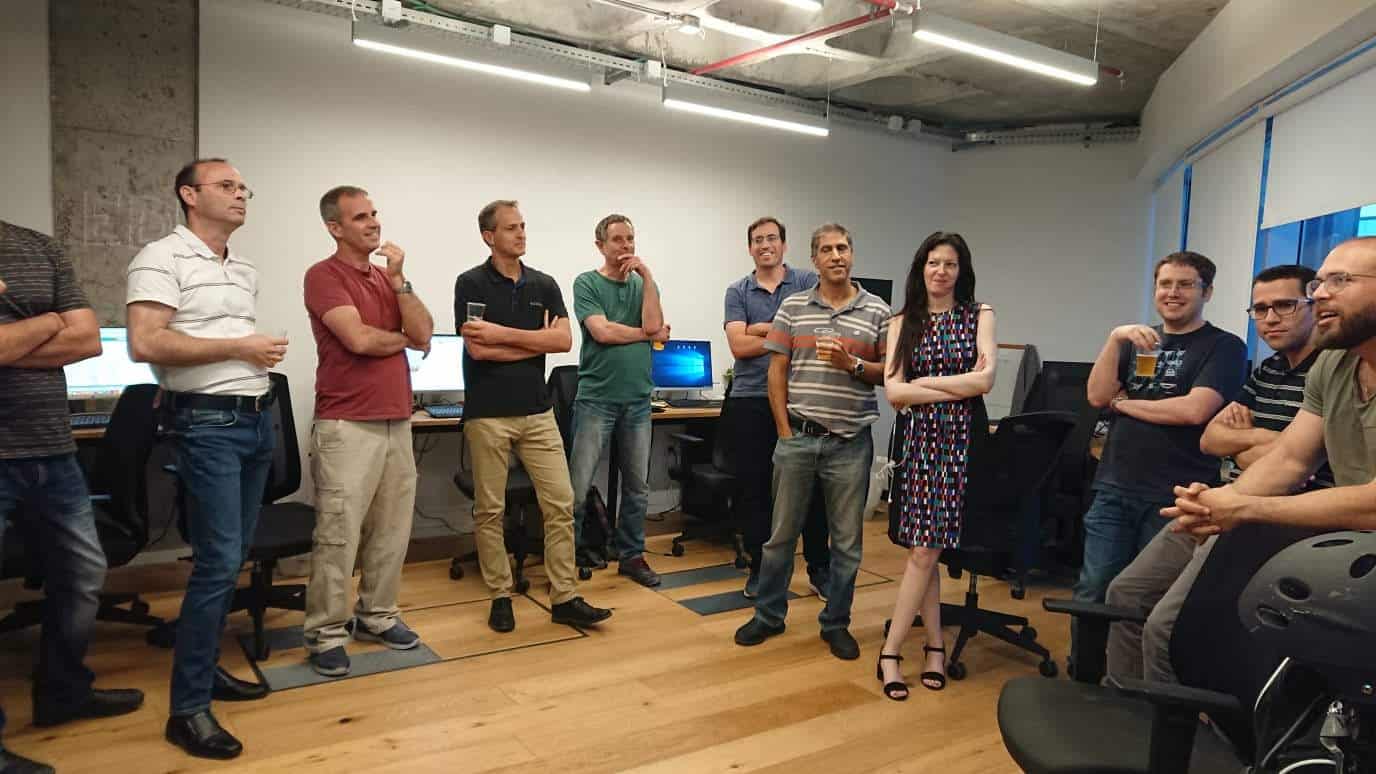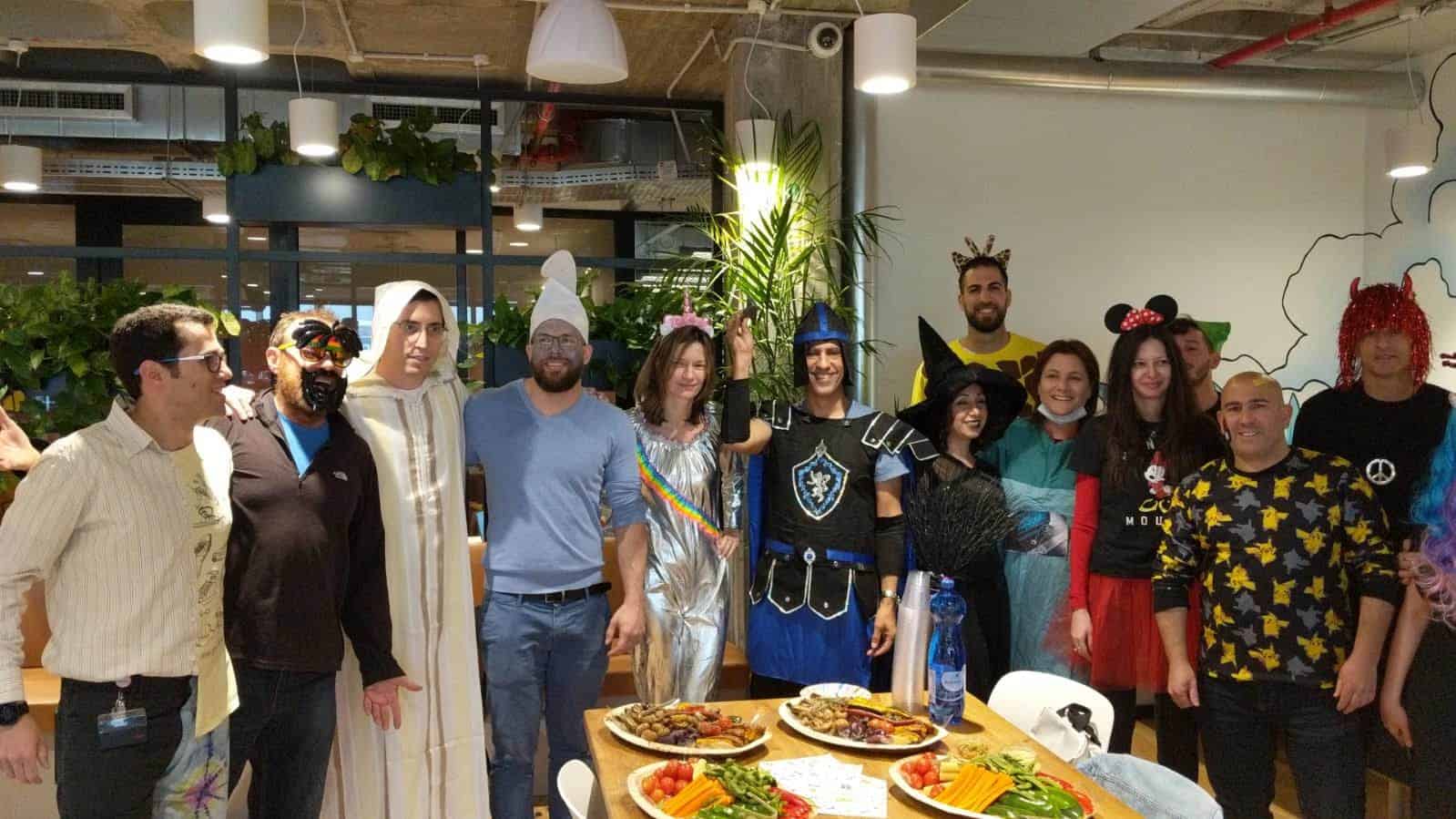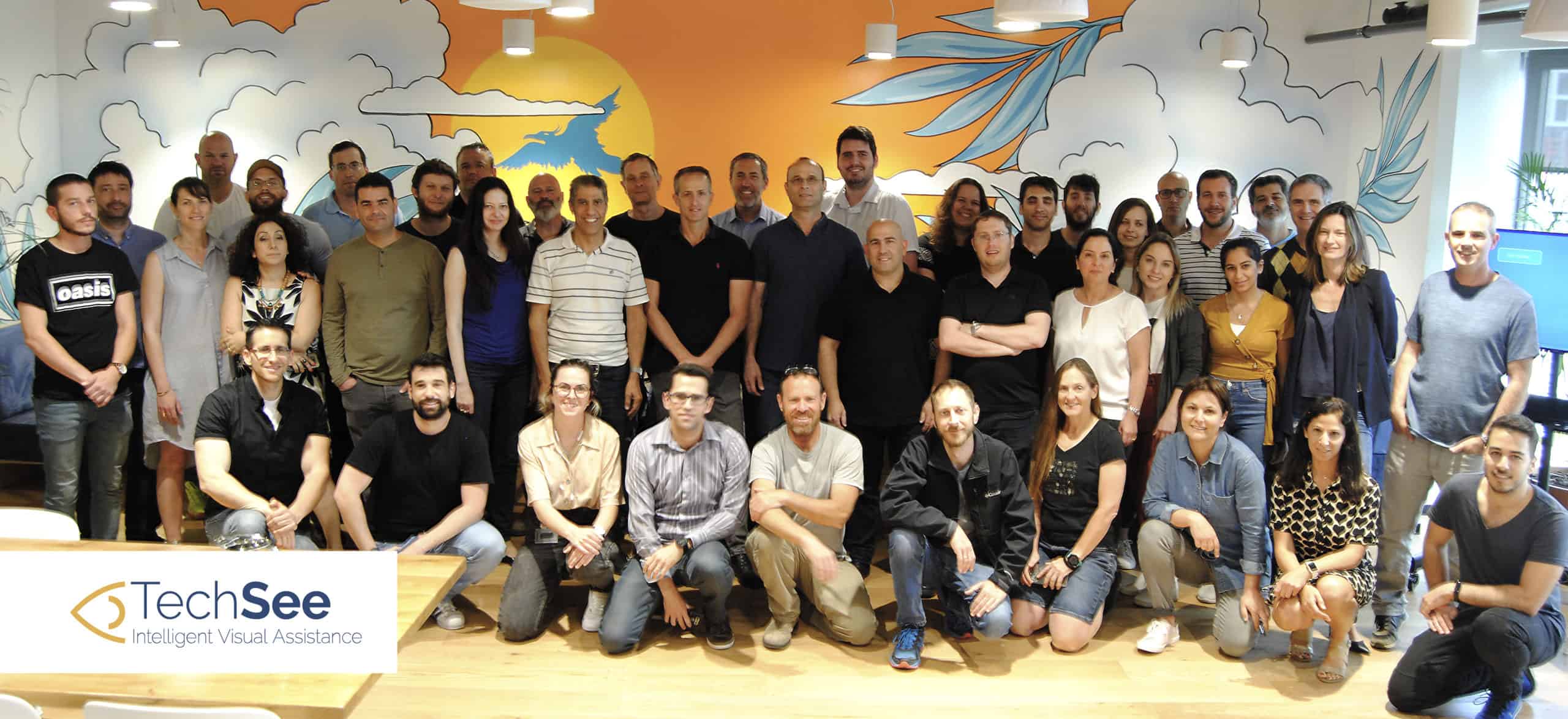Contents
- How was the idea of TechSee born?
- What made you decide to invest the time and resources into founding TechSee?
- What was your ultimate dream for TechSee when you started the company and has it changed over time?
- What was your favorite memory from the early days?
- What was the hardest part of making TechSee a reality?
- What advice can you give to other entrepreneurs looking to start their own high-tech company?
- What does success for TechSee in the next few years look like to you?
- What kind of company culture do you strive to create at TechSee?
Getting up close and personal with the founders of Techsee, Eitan and Amir
May 12th will mark six years since TechSee’s founders set out on a mission that seemed to critics – at the very least – to be a bit, well, far fetched: to build tech that went beyond the dumb chatbots to which we’ve all grown accustomed and make something far better. Something that could actually see what we see. Something that could learn. Something that could engage with us visually rather than simply send text to us from a pre-fixe menu.
Six years later, TechSee is now the leader in visual engagement powered by Computer Vision AI and augmented reality. TechSee’s intelligent bots help millions of people every day when they engage with the brands and businesses they use.
In honor of this special occasion, we’ve caught up with the founders of TechSee – Eitan Cohen and Amir Yoffe – to hear firsthand about the TechSee dream and its ongoing success.
These two entrepreneurs, who have been friends and mountain biking partners for 15 years before they embarked on the TechSee path together, each took a trip down memory lane and shared their thoughts with us.
How was the idea of TechSee born?
Eitan: Both Amir and myself were looking for the next great challenge. The idea for me came from the frustration I personally experienced when I repeatedly had to drive over to my mother-in-law’s house to help with technology issues. Anyone who’s ever had to walk someone through a tech issue by text or voice call knows what I’m talking about – it’s just no substitute for being there, in person. You know, hands-on. But the reality is that’s not always possible. So I thought: How can I be hands-on without actually physically being present to manage these complex tech issues? I’d heard of smart glasses being used in certain industries, but wondered if the same concept could be applied to the smartphone for everyday consumers.
Amir: When Eitan called and told me about his idea for video support, I immediately thought of a use case based on a situation from that very day. I had been waiting a full week for Bezeq, a major telecom provider in Israel, to send a technician to fix my Internet. When he arrived, he recognized and resolved the issue just by looking at the device without ever touching any of the hardware. If the agent I spoke to a week earlier had been able to see what the technician saw, he could have diagnosed the issue over the phone and fixed it in seconds, and I would not have suffered for a week without the Internet. So when Eitan called me with the idea for the technology, I immediately offered the use case. And by the way, Bezeq was our first customer!
What made you decide to invest the time and resources into founding TechSee?
Eitan: When we began talking about our idea, we received an overwhelmingly positive response from potential customers. The concept was technologically complex on one hand, but brilliantly simple on the other. I recognized that our solution could literally help people all over the world.
Amir: Once we came up with the idea, we were sure that there would be plenty of companies doing the same thing already. We did some market research and were surprised that a solution didn’t currently exist. We met up with the main telecoms in Israel back then and got amazing feedback. One C-level person said, “I’ve been waiting for this for the last 10 years.” Another VP said, “I’m ashamed that I didn’t think of this first.” That’s when I knew we had a winner.
What was your ultimate dream for TechSee when you started the company and has it changed over time?
Eitan: We wanted to have TechSee inside every mobile device so that every person in the world could be empowered to help themselves. What changed was the path to achieve that. We originally focused only on human-to-human interactions with contact centers. But we came to realize that people were happy to interact with chatbots as long as they could solve their problem…which, as it turns out, was not very often. And the reason, it seemed, was because chatbots were and still are relatively, well, dumb. They can’t see what you see. They can’t learn. That’s when we started the journey toward automating these interactions using advances in AI.
Amir: We dreamed that video interactions in customer service would be as necessary to a company as a CRM; that it won’t be just another channel where you can interact with customers, but it will be THE channel where you interact with customers. When we first started, we had a white board in Eitan’s basement that was split in two: on one side, we wrote “Agent assists the customer via video platform.” On the other side, we wrote, “Same technology using AI for self-service.” So that was our dream from Day 1. Eitan and I just had to debate which one to start with. Today, we do both.
What was your favorite memory from the early days?
Eitan: I’ll never forget when the whole company — we were five people back then — was stuffed into one room in my basement. I remember Amir and I traveling together with a modem in our backpack to demonstrate our product in person to as many potential clients as possible.
I remember listening in on a call where the customer was absolutely bowled over by the technology. Those were exciting times.
Amir: I remember the feeling of euphoria when the CEO of one of the biggest CRMs in the world told us that we were going to be the next-generation of CRMs. Wow!
What was the hardest part of making TechSee a reality?
Eitan: The hardest part was winning the first few customers because no one wants to be first to take a chance on you, especially when you are dealing with large enterprise customers. Once you sign those first few customers, you have the social proof you need to succeed.
Amir: Maintaining balance. Finding the right balance between your dreams and what you can actually achieve right now. And balancing the advice of others with what your gut tells you to do. When you start out, you have ideas and the freedom to make them happen, but not the resources. Later, you have more resources but trying to do everything instead of thinking strategically can damage your product and brand. Sometimes you have to stay true to the direction you want to take the company, even if that means you can’t give the client exactly what they want.
What advice can you give to other entrepreneurs looking to start their own high-tech company?
Eitan: Expect errors, be patient and embrace the difficulties as opportunities to get stronger and learn. Believe in yourself and prepare for a marathon.
Amir: Don’t do it 😊. No, I’m kidding. But in all seriousness, it’s hard work with lots of risks. And unless you really believe in what you are doing, the risks and the low points can be discouraging. But it’s so exciting to create something from scratch. Hire the best people and listen to those around you, including your customers. Don’t think you know everything.
What does success for TechSee in the next few years look like to you?
Eitan: For me, success will be when TechSee’s visual support is so baked into every company’s CX program that customers expect it. To be the digital twin of every product and service. To be the partner of choice for Accenture, CapGemini, Deloitte, Salesforce and Service Now, and to be the enabling platform for those companies to deliver the best customer experience. We are dreaming big. 😉
Amir: TechSee is already a success. We operate in 45 countries, and we can boast the logos of some of the biggest companies in the world across many industries. We will become even more successful when the world understands that visual interactions are no longer a nice-to-have option. As our products and services become more complex, it’s only logical to think that so, too, will their instruction and operation manuals. Only, people don’t want to read manuals. And even if they do read them, people don’t learn that way. That’s when TechSee becomes a need-to-have.
What kind of company culture do you strive to create at TechSee?
Eitan: Having a Customer-First mentality. To achieve that, we need to focus on building great products, and delivering on what we promise. This creates trust, both internally and in the market. We also need to realize that we don’t know everything and to listen to others. So Customer-First. Trust. And Humility.
Amir: A “Let’s do it” mentality. A culture of innovation and teamwork. Of working hard but having fun while we’re at it.
Thanks, Eitan and Amir. May you have many more years navigating new mountain biking trails together, while steering TechSee down the path to growth and endless success in the years ahead. And a big shout out to all our customers, partners and employees — without you, we wouldn’t be here. Thank you for believing in us and dreaming our dreams with us. Happy Birthday, TechSee!












